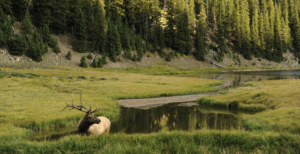
As the leaves start to turn and the air takes on that crisp chill, you know it’s that time of the year again – fall bass fishing season! There’s something magical about this time, as bass go through their seasonal dance, migrating and feeding differently from the warmer months. If you want to make the most of your autumn fishing adventures and reel in some trophy-worthy catches, you’ve come to the right place.
Fall Bass Behavior
As the summer heat begins to wane and the days grow shorter, bass undergoes a fascinating transformation in their behavior during the fall season. For anglers, this shift can mean the difference between a successful day on the water and going home empty-handed. To truly master fall bass fishing, it’s essential to grasp the intricacies of their behavior during this time.
Migration Patterns of Bass during Fall
Fall is a transitional season for bass, and understanding their migration patterns is crucial. As the water cools, bass move from their deep summer haunts towards shallower waters in search of food so they can store up for the long winter. This migration can vary depending on the geographical location and the specific body of water you’re fishing.
Key Environmental Factors Affecting Bass Behavior
Several environmental factors play a significant role in dictating bass behavior during the fall season.
Water Temperature: As the water temperature drops, bass become more active and start feeding more aggressively, making it a great time for casual and sport fishing. Understanding the temperature ranges preferred by bass during fall can help you pinpoint their locations and adjust your fishing techniques accordingly.
Photoperiod and Daylight Hours: The diminishing daylight triggers biological changes in the bass, signaling the need to prepare for the colder months ahead. It can influence their feeding patterns and movement, making certain times of the day more productive for fishing.
Forage Availability: Fall is a time of abundance for baitfish and other prey species, which means bass have a vast array of food options. Knowing the prevalent forage in your fishing area can guide your lure selection to match their preferred prey.
Location: Finding the Autumn Bass
You don’t need a fancy fish finder to locate and catch bass in the fall. In the Autumn season, bass transition from their summer deepwater haunts to shallower areas, understanding their preferred locations during this seasonal shift can greatly increase your chances of landing a big catch.
Targeting Transition Zones
Fall is a time of change, and bass tend to move along specific routes between their summer and winter habitats. These transitional zones are prime locations to target:
- Points and Drop-offs: Bass often congregate near points and drop-offs as they make their way to shallow waters. These structures offer easy access to both deep and shallow areas, providing a perfect ambush spot for feeding.
- Creek Channels and River Channels: Bass utilize natural waterways like creeks and rivers during their migrations. Focus on the bends, where the current slows down, as bass tend to hold there, conserving energy while waiting for prey to come their way.
Identifying Prime Cover and Structure
Bass are opportunistic predators, and they gravitate toward cover and structure that offers protection and easy access to food. Key elements to look for include:
- Vegetation (Weeds, Grass, and Lilies): Fall often sees an increase in vegetation growth, providing an excellent habitat for baitfish and other prey. Target areas with submerged or emergent vegetation for productive fishing.
- Rocks and Boulders: Rocky structures create hiding spots for bass and attract various prey species. Casting near these areas and allowing your lures to bounce off the rocks can trigger strikes.
- Fallen Trees and Brush Piles: Overhanging trees and submerged brush piles offer cover for bass to ambush their prey. Work your lures around these structures, and you might be surprised at the results.
Best Fall Bass Lures
- Crankbaits: Choose medium to deep-diving crankbaits in shad or crawfish patterns. Retrieve around points, drop-offs, and weed edges.
- Spinnerbaits: Opt for spinnerbaits with willow leaf or Colorado blades in sizes matching local forage. Slow-roll them through vegetation and rocky structures.
- Jigs: Use football or finesse jigs in natural colors with soft plastic trailers. Flip into cover and fallen trees where bass hide.
- Soft Plastic Baits: Try jerkbaits, swimbaits, and creature baits in colors resembling local prey. Work with a slow, twitching retrieve.
- Topwater Lures for Early Fall: Use buzzbaits, poppers, and walking-style lures during mornings and evenings over shallow areas with cover.
- Lipless Crankbaits: Lipless crankbaits are versatile and can be used to cover water quickly. Their vibrating action works well for enticing bass in cooler water temperatures. Retrieve them with a steady or yo-yo style retrieve.
- Jerkbaits: Jerkbaits excel in mimicking injured baitfish, making them ideal for fall when bass are actively feeding. Use suspending or slow-sinking jerkbaits, and work them with sharp jerks and pauses to trigger strikes.
Fall Transitions
- Early Fall Strategies:
- Target Transition Zones: Focus on areas where bass move from deep to shallow waters, such as points, drop-offs, and creek channels.
- Use Topwater Lures: In the warmer early fall days, topwater lures like buzzbaits and poppers can be effective during low-light periods.
- Pay Attention to Water Temperature: As the water starts to cool, look for slightly warmer pockets, as bass may congregate in these areas.
- Mid-Fall Tactics:
- Follow the Baitfish: As the temperatures drop further, bass key in on schools of baitfish. Pay attention to where the forage is, and you’ll likely find the bass nearby.
- Slow Down Your Presentation: As bass become less active in cooler water, slow your retrieve and use finesse techniques with soft plastic baits and jigs.
- Target Vegetation: Fall brings an abundance of vegetation, which attracts baitfish and, in turn, bass. Fish around weed beds and submerged grass.
- Late Fall Approaches:
- Go Deeper: As winter approaches, bass move to deeper waters. Focus on fishing deep structure and drop-offs, using jigs, blade baits, and deep-diving crankbaits.
- Adjust Your Schedule: With shorter daylight hours, bass may be more active during midday. Consider adjusting your fishing times accordingly.
- Downsize Your Lures: As bass become less aggressive, switch to smaller lures and lighter lines to entice bites from wary fish.
- Adapting to Changing Weather Conditions:
- Watch the Weather: Pay attention to sudden weather changes, as they can impact bass behavior. Fishing ahead of a cold front can often trigger feeding frenzies.
- Be Flexible with Locations: Bass may move to different areas based on weather patterns. Stay adaptable and explore various spots until you find the active fish.
- Adjust Lure Colors: In murky or stained water, use darker-colored lures, while in clear water, opt for more natural and subtle hues.
How Fall Fishing is Unique
The fall fishing season stands out as a distinct and exciting period in the angling calendar, setting itself apart from other seasons in several remarkable ways.
First and foremost, the behavior of bass undergoes a significant transformation during this time. As the water cools, these prized predators shift from their summer deepwater hangouts to shallower areas in search of abundant forage. Their feeding patterns become more aggressive, making them more responsive to various lures and techniques.
Additionally, fall presents a spectacular showcase of nature’s beauty, with the changing colors of the foliage providing a breathtaking backdrop to your fishing adventures. Unlike the scorching heat of summer or the icy grip of winter, fall offers comfortable temperatures for anglers to enjoy their time on the water without the extremes.
Moreover, the seasonal transition lures in numerous species of baitfish, creating a feeding frenzy that can lead to explosive topwater action. It’s also a time when trophy-sized bass are more actively foraging to build energy reserves before the colder months.
Whether you are a bank fisherman or are able to cruise around on a boat, all these factors make autumn the perfect time for all anglers to catch bass.
Reeling this In
As we wrap up our fall bass fishing adventure, I hope you’re excited to hit the water and try out these strategies. The fall season offers a unique and magical experience with changing colors and the thrill of landing big bass.
Remember to appreciate nature’s beauty and practice responsible fishing. So gear up, head out with friends, and make this fall fishing season unforgettable. Tight lines and happy fishing!







